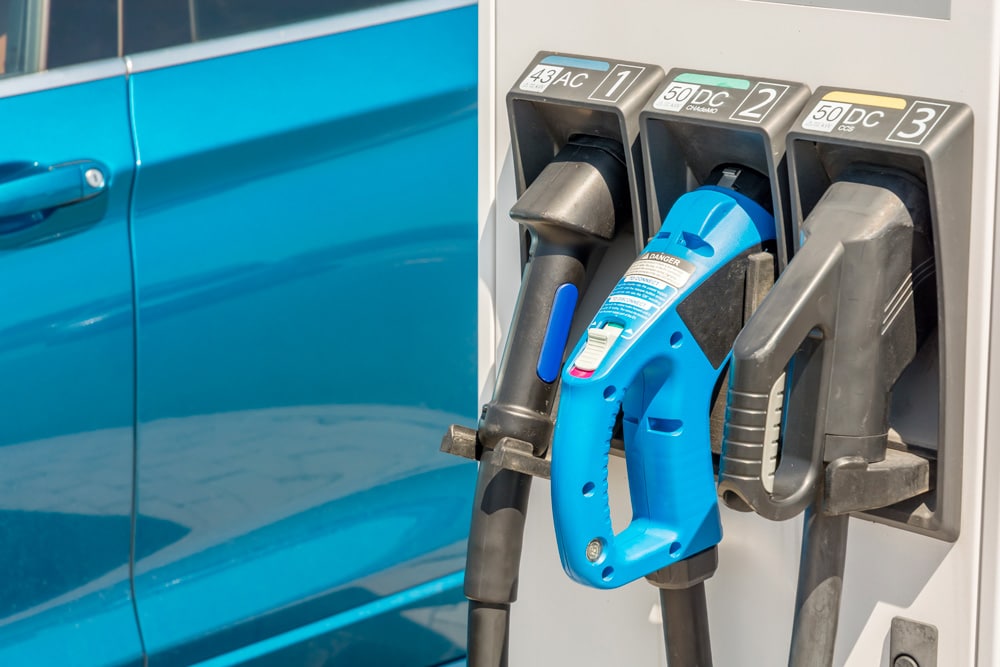
If you want to move towards an alternative solution to gasoline or diesel, you can consider acquiring an electric vehicle. However, it is important to understand how electric car charging works. There are indeed different ways of recharging an electric car and each process has its own advantages and disadvantages. We take stock in this article.
Level 1 recharge
As you know, the operation of an electric car remains totally different compared to a combustion engine, petrol or diesel car. Thanks to electric technology, you no longer need petrol to drive, but you will need the electricity contained in your vehicle’s lithium-ion battery. The latter then transfers the necessary energy to all the components in order to move you safely. Regarding the recharging of an electric car, know that 90% of owners do it from their home. It is therefore strongly recommended, even necessary, to have a charging station at home.
Level 1 charging is compatible with any electric car. Indeed, the connection is made on a standard household outlet, which has an obvious advantage in terms of compatibility. However, you have much slower charging and on average it will take you 20 hours to fully charge your electric car. For some models, the recharge time can even reach 30 hours! This then corresponds to a full day, or even more, which is not necessarily practical if you regularly use your car. In addition, manufacturers do not recommend this charging solution, because the risk of overheating is greater. However, if you only drive occasionally, it saves you from setting up a specific charging station. On the other hand, if you want to benefit from faster and more reliable charging, you have no choice but to go to a charging station with a higher level, such as a wallbox.
Using a level 2 charging station
The Charging Station is an essential device if you need to charge your electric car directly at home. In comparison with a level 1 recharge, For a Renault Zoé for example, with a 7.4 kW wallbox, you can recharge your vehicle with a 50 kWh battery in 4h15 and only in 1h26 with a 22 kWh model. Often you plug your electric car into the level 2 charging station, also known as a wallbox, before you go to bed and when you get up in the morning, you enjoy the full range of your car. However, to benefit from such a device, it is necessary to call on a certified electrician. This one will be able to carry out an installation in the rules of the art, while checking your electric circuit so that it supports such a power. Also be aware that the majority of these sockets are not portable. Another disadvantage, you must have from a private location to park your vehicle and charge it. That is, a carport, garage or other shelter for your electric car. If you park on the road, it will be much more complex for you to set up a level 2 charging station.
Level 3 charging station Also called BRCC terminal (fast terminals), you will benefit from ultra-fast charging for your electric car. It works in direct current (DC) and can be recharged at 400 V. In just 30 minutes, your car battery has an autonomy of 80%. Of course, this is an average depending on the capacity of your battery and the power supported by the electric model you have. This type of terminal is generally found along highways, near businesses or in parking lots specifically provided for this purpose. It is therefore recommended to use them occasionally, because the high voltage may cause damage to the battery. However, it’s a great way to fully charge your car when you’re in a hurry so you can quickly get back on your journey.
The different sockets for electric cars
For charging an electric car, the Type 2 socket has a charging power of between 3.7 and 22 kW. The latter works with alternating current (AC) and comes in the form of a socket, i.e. a socket or in the form of a connector, i.e. a socket. male. On a higher power, you find the dedicated sockets, the Combo CCS and the CHAdeMO. These two connectors are dedicated to fast charging and are then fitted to the terminals concerned. Note that the majority of electric vehicles currently on sale have a Combo CCS socket, especially since the European Union defines it as a standard in terms of fast charging. The CHAdeMO connector concerns first-generation Asian rechargeable electric or hybrid vehicles and several terminals are equipped with it, even if it is no longer mandatory on new infrastructures in France. When you acquire your electric car, it is directly equipped with a charging cable so that you can connect anywhere. However, systematically think about setting up a level 2 charging station at your home in order to drive more often with the electric car. It is an investment from the start, but in some cases, it is supported by the manufacturer by directing you towards a new purchase. Similarly, you can benefit from government aid in the form of a tax credit of €300 and if you live in an apartment building, you can claim the ADVENIR bonus.
The final word, now you know how to charge your electric car using the different charging solutions. You also have a better understanding of the different existing sockets, which will allow you to embark on the acquisition of an electric car with complete peace of mind. If in doubt, you can always discuss it with the car manufacturer so that it can offer you the best solutions adapted to your daily life.
